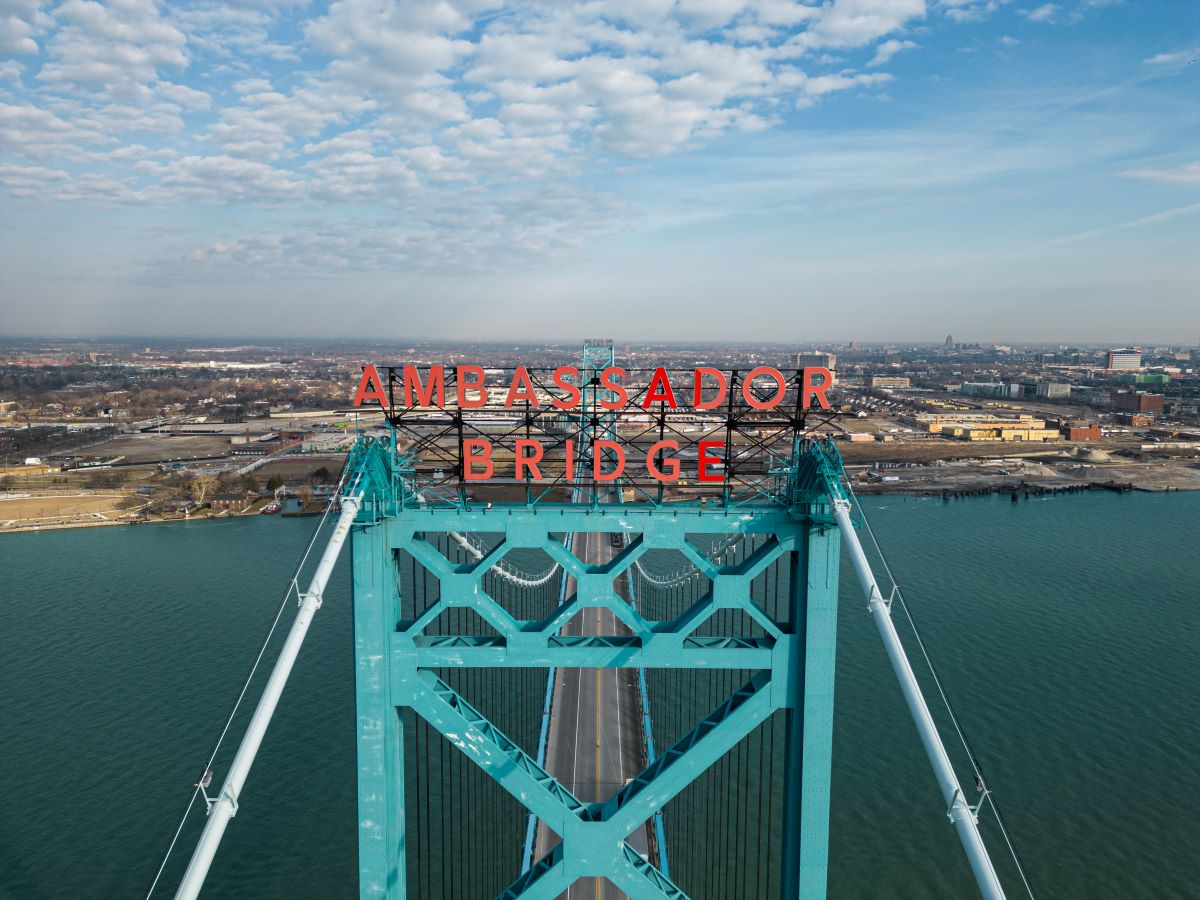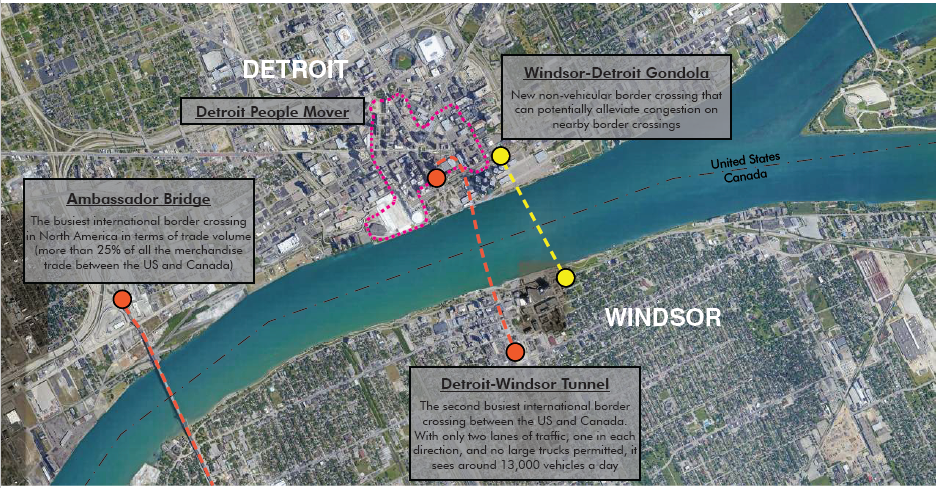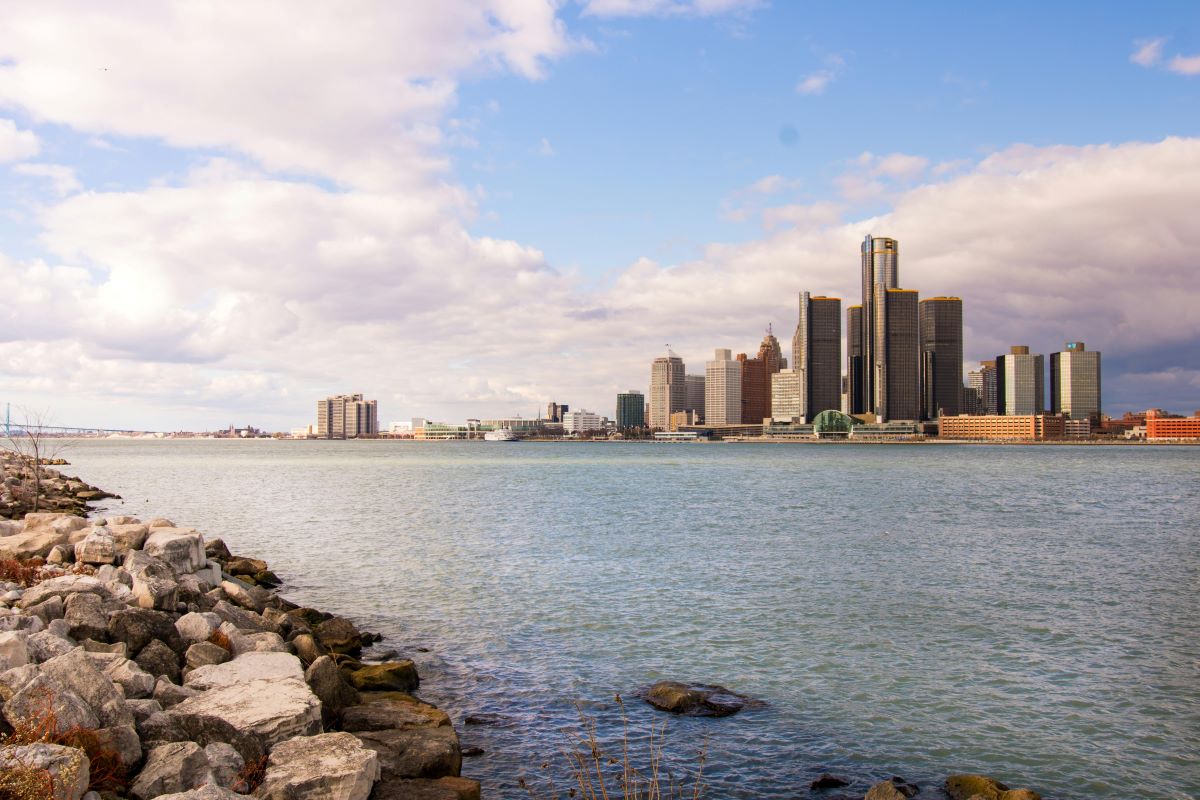
Cities, SI Urban 1/2024, Tourism
Crossing border by cable car
Notably, the Canadian city of Windsor is unofficially nicknamed “South Detroit.“
Many companies in Detroit employ workers who reside in Windsor, and vice versa. These workers commute daily across the Detroit River to reach their workplaces and return home. Additionally, it is common for Windsor residents to frequent Detroit for evening outings, albeit to a lesser extent in reverse.
With the economic growth of the city of Windsor, passenger traffic between the two cities is expected to increase further in the future. Windsor plans to construct a new battery factory that would employ over 2,000 people.
If this project is realized, it is likely that more companies will settle in the area, leading to population growth. To manage the heavy commuter traffic, a second bridge is currently being built 3.2 kilometers south of the Ambassador Bridge, with an estimated opening date in 2024.
Additionally, a cable car is proposed to reduce road traffic and improve mobility.
Situation
Real and planned connections across the Detroit River.

Connection across the Detroit River
A cable car between Windsor and Detroit would be the first non-road bound high-capacity connection across the border. It would not only serve as an alternative for many commuters but also herald the beginning of a new public transportation network connecting various destinations within the two cities.
Unlike traditional modes of transport, cable cars offer significant advantages such as lower costs, less space requirements, and shorter construction periods.
Multiple routes possible
A feasibility study will now serve as a solid foundation for further steps. Various route options are conceivable: one route runs from Ford Field to Comerica Park, while an alternative route serves the TCF Center event venue, including a park-and-ride facility.
It is also conceivable to connect the centrally located Devonshire Mall and existing public transit lines.
station = border
Another border crossing between Windsor and Detroit could potentially be facilitated by a cable car connection.

Bureaucratic challenges
While Windsor and Detroit already have multiple active border crossings, introducing a new border crossing entails a series of complex requirements and special permits. The legal framework for a new border crossing in the form of a cable car would need careful scrutiny in both countries.
Additionally, the signature of the President of the United States is required for any new border crossing in the USA. Lastly, the cable car would need to be supervised by American and Canadian border authorities.
Another challenge is traversing inhabited areas. While the area east of the proposed station site in Windsor is a low-density residential area, the planning of the cable car would still need to consider the impact on surrounding private properties – including the privacy of their residents and their aesthetic preferences.
Technical data:
Windsor-Detroit
| System | 3-cable-gondola |
| Length | 1,280 m |
| Towers | 2 |
| Height difference | 18,25 m |
| Speed | 8 m/s |
| Travel time | approx. 3,9 min |
| Number of cabins | 20 |
| Cabin capacity | 32 P. |
| Capacity per direction | 4.500 P./h |
| Cabin distance | 28 sec |
| Span over water | 825 m |







